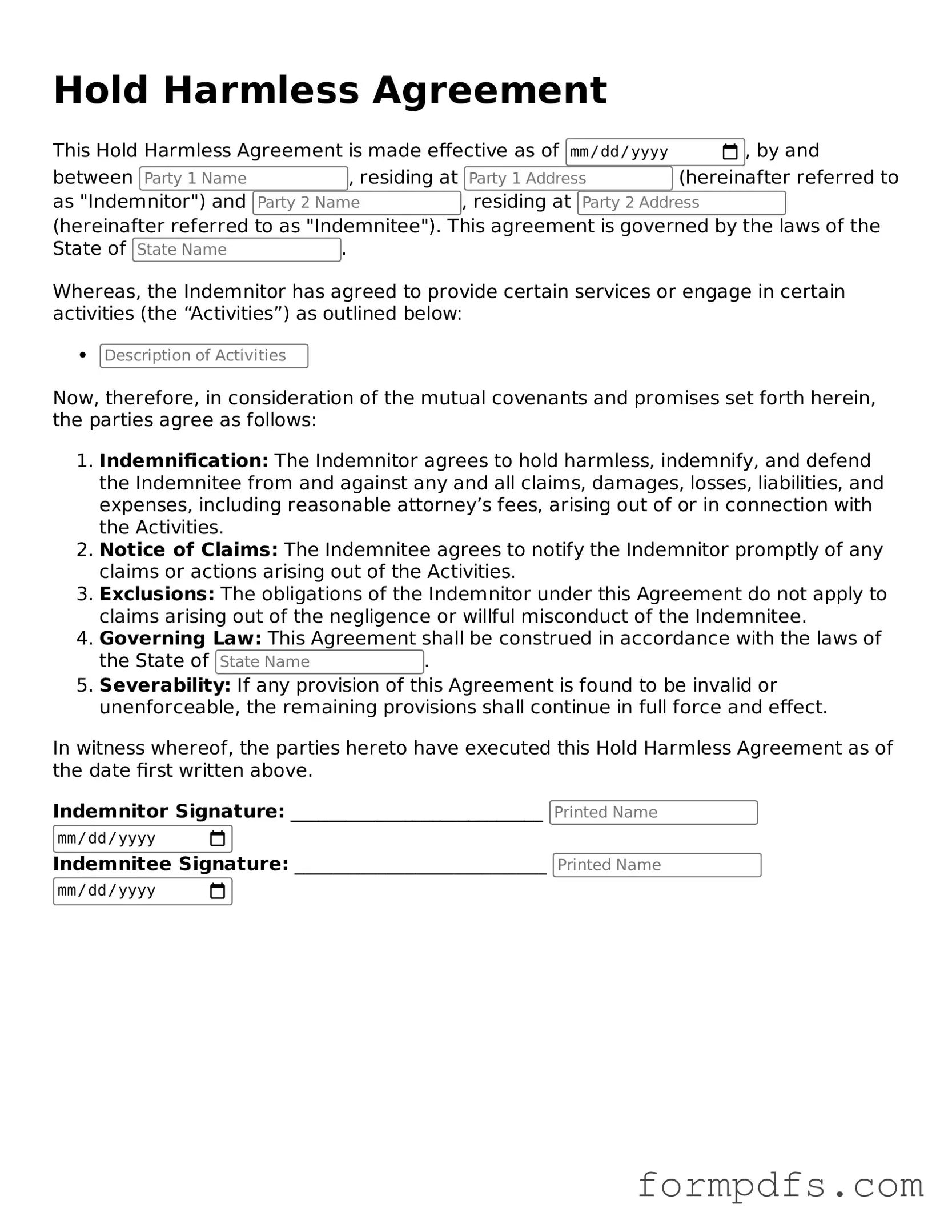What is a Hold Harmless Agreement?
A Hold Harmless Agreement is a legal document that protects one party from liability or claims that may arise from a specific activity or event. It essentially ensures that one party will not hold the other responsible for any damages or injuries that may occur during that activity.
When should I use a Hold Harmless Agreement?
You should consider using a Hold Harmless Agreement when engaging in activities that involve potential risks, such as hosting events, renting property, or participating in recreational activities. It is particularly useful when one party is providing a service or facility and wants to limit their liability.
Who benefits from a Hold Harmless Agreement?
The primary beneficiary of a Hold Harmless Agreement is the party providing the service or facility. However, the party signing the agreement also benefits by understanding the risks involved and agreeing to take responsibility for any issues that arise.
Is a Hold Harmless Agreement legally binding?
Yes, a Hold Harmless Agreement can be legally binding if it is properly drafted and executed. Both parties must agree to the terms and conditions, and the agreement should comply with applicable laws. It’s advisable to have a legal professional review the document.
Can a Hold Harmless Agreement be enforced in court?
Yes, a Hold Harmless Agreement can be enforced in court, provided it meets legal requirements. However, courts may not enforce agreements that are deemed overly broad or unfair, especially if they attempt to waive liability for gross negligence or intentional misconduct.
What should be included in a Hold Harmless Agreement?
A Hold Harmless Agreement should include the names of the parties involved, a clear description of the activity or event, the specific liabilities being waived, and the duration of the agreement. It may also outline any insurance requirements and the governing law.
Can I modify a Hold Harmless Agreement?
Yes, you can modify a Hold Harmless Agreement as long as both parties agree to the changes. It is important to document any modifications in writing and have both parties sign the updated agreement to ensure clarity and enforceability.
What happens if I don’t sign a Hold Harmless Agreement?
If you choose not to sign a Hold Harmless Agreement, you may be assuming full liability for any risks associated with the activity. The other party may also refuse to allow you to participate in the event or use their services without the agreement in place.
Are there any risks in signing a Hold Harmless Agreement?
Yes, there are risks in signing a Hold Harmless Agreement. By signing, you may be waiving your right to sue for damages or injuries that occur, even if they are due to someone else's negligence. It’s crucial to read the agreement carefully and understand the implications before signing.
Do I need a lawyer to create a Hold Harmless Agreement?
While it is possible to create a Hold Harmless Agreement without a lawyer, it is highly recommended to seek legal advice. A lawyer can ensure that the agreement is properly drafted, complies with laws, and protects your interests effectively.
